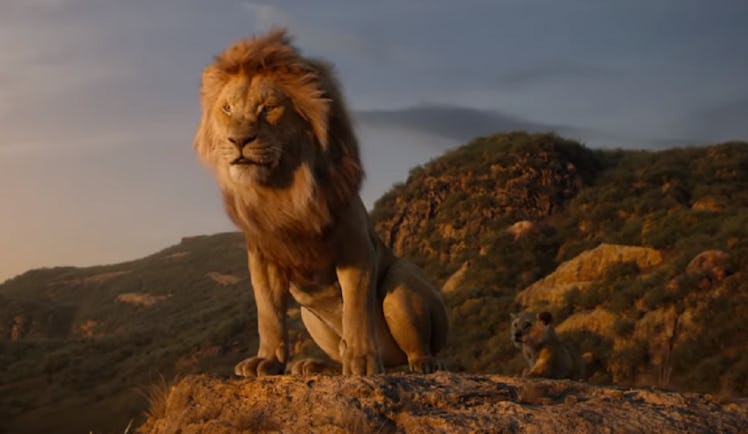
Here's Everything You Should Know About The Animation In 'The Lion King'
Disney continued its streak of remaking classic movies with The Lion King, a take on the original animated film with a modern-looking touch. While the new version features a star-studded lineup of voice talents, the visuals of The Lion King are just as captivating as that dreamy "Can You Feel The Love Tonight" duet between Donald Glover and Beyoncé. But how is The Lion King animated, exactly? Director Jon Favreau turned to the same technology seen in his remake of The Jungle Book.
The Lion King is officially in theaters on July 19, but early reviews of the film have already praised it for its amazing visuals. Instead of the 1994 movie's traditional, hand-drawn animation, Favreau's versions of Simba, Nala, and other African savanna creatures resemble real animals. But as with most modern art, he used digital methods to create this world. For his 2016 live-action remake of The Jungle Book, Favreau applied computer-generated imagery (CGI) to bring the characters to life; he also used motion capture to incorporate voice actors' own physical quirks into their movie counterparts. While making The Lion King, he took a similar approach, but had to work without a human element like The Jungle Book's Mowgli.
As Vanity Fair notes, this photo-realistic method doesn't quite result in faces as distinct as Disney's most beloved animated characters, but the finished look is the kind of majestic lion seen in The Lion King's official trailer.
During the making of The Lion King, production teams referenced videos and photos of real animals and studied clips of the film's voice actors in order to create characters with the cast's physicalities attached. These two elements were blended together for the final CGI version of the characters. Hoping that the film would compare to a "naturalistic documentary," Favreau avoided the motion-capture trait of applying actors' exact facial features to their characters, and instead focused on capturing the performers' essence on screen.
"What we said to [the cast] is we want you to embrace this character fully," casting director Sarah Halley Finn told CNN. "Let your imaginations run wild, fill this emotionally, have fun with it and bring it to life in the best way you can."
In addition to this precise character creation, Favreau and his team used VR technology to create Simba's kingdom of Pride Rock and explore the scene from any possible angle. Entertainment Weekly reports that on the virtual set, filmmakers could switch camera positions, just as they would at a physical location, before the camera's movements were encoded onto video.
“The whole reason for all of this is to make an animated film feel live-action — to have a real crew come in, interface with an animated film, and make all the camera decisions that you would on set, instead of somebody sitting at a keyboard programming in the camera moves,” Favreau told EW. “If you look at the way we’re covering and cutting [the animated performances], all of that is related to traditional cinema.”
Starring Glover as the leading Simba and Beyoncé as his childhood sweetheart Nala, The Lion King also features Seth Rogen as Pumbaa, Chiwetel Ejiofor as Scar, and Billy Eichner as Timon. The Lion King is in theaters on Friday, July 19.